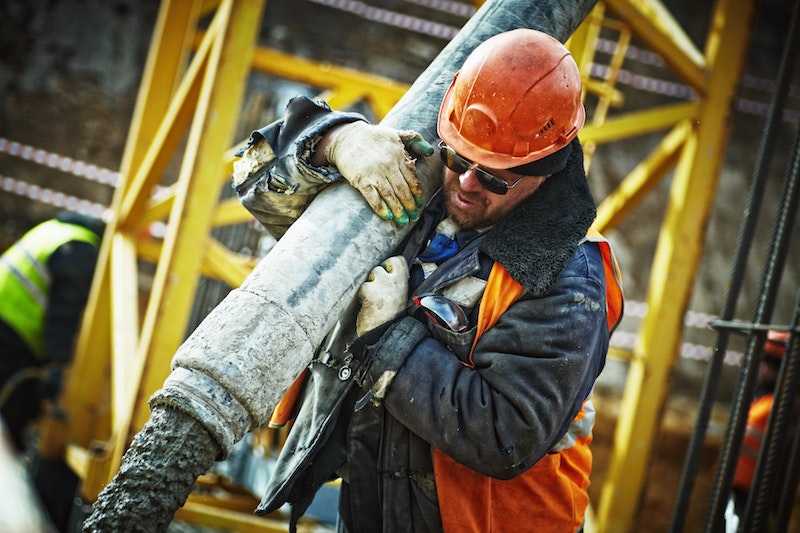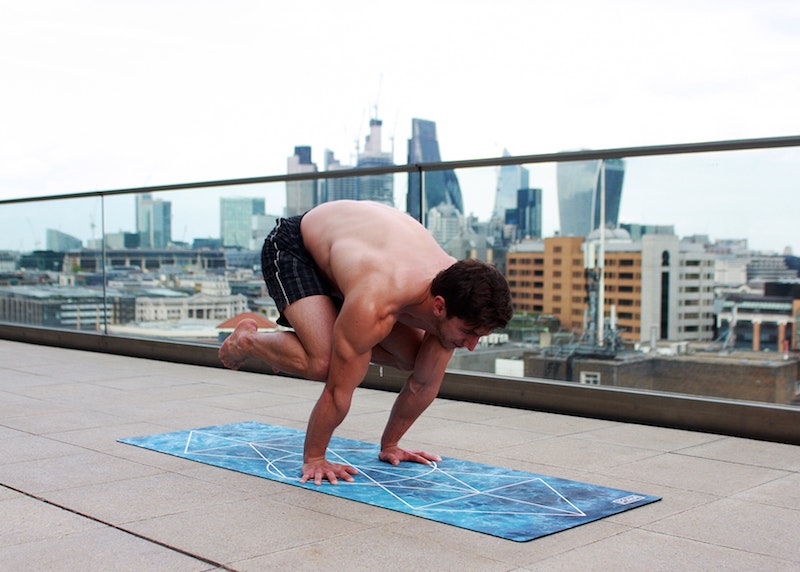
People who work long hours at a desk often find themselves itching for some exercise by the end of the day.
After all, sitting too long and staring at a computer doesn’t feel so great! And the dangers of a sedentary lifestyle are all too well-known.
But do you still need to exercise if you have a physical job that keeps you on your feet all day?
Absolutely! And here’s why:
A physically demanding job will keep you active and burning lots of calories, but it can wreak havoc on your joints, bones, back, muscles, and even your heart. You should definitely make time to exercise in addition to your physical job because exercise is a far better way to improve the conditioning, strength, mobility, and longevity of your body.
I acknowledge that it’s really challenging to find the time and energy to workout after a long day of labor, but if you can find even just 15-30 minutes a few times per week, the benefits will be incredible. I’ll have a few tips to help you at the end of this article.
Here are just a few of the benefits of regular exercise for people with physical jobs.
1. Strengthen your heart, don’t stress it
You might think being active, on your feet, moving, and lifting things all day means you’re in pretty great shape.
And that might be true!
But let’s consider your old ticker for a second.
Continuous physical work for hours at a time without proper rest has been shown to inhibit the cardiovascular system — your heart rate and blood pressure stay too elevated for too long — whereas well-programmed training (running, elliptical use, HIIT, etc.) can improve it.
Boosting your cardio and conditioning has more short and long-term benefits than we can even list here.
2. Build muscle (the right way)
Lifting things all day is great for building some functional strength, but you won’t continue to get stronger and build muscle without proper training.
That means incorporating progressive overload into your training — lifting heavier and heavier loads over time.
Building muscle is obviously an awesome way to look and feel great, but it has other benefits if you’re not interested in becoming the next Arnold.
Proper strength training can promote bone density and health, improve your posture, and keep your metabolism firing quickly.
(And don’t forget, to build muscle you’ll have to get the right nutrtion — specifically, more protein than you’re used to.)
3. Soothe aches and pains
If you’re a construction worker, plumber, builder, nurse, doctor, or anyone else who’s active all day, there’s a good chance you spend a lot of time in awkward positions.
Hoisting things off the ground with bad form (using your back too much), sitting and squatting at strange angles, and just generally making your body move in ways it doesn’t want to can leave you feeling awful.
The right kinds of exercise can really help your body feel a lot better.
Specifically, developing a stronger core, building strength and flexibility in your lower back, and stretching your entire body to build mobility will help you feel a LOT better at the end of the day.
4. Standing a lot is good, until it’s not
Sitting too long is awful for your health, but standing all day long has just as many drawbacks.
According to WebMD, spending more than five hours a day on your feet can contribute to lower-limb muscle fatigue and long-term back pain.
You can undo some of this damage with a good workout.
Strength-building leg days that include squats, lunges, deadlifts, and more will build your lowerbody beautifully.
Workouts that strength or stretch your lower back (like yoga) can ease those aches you might feel right above your tailbone.
5. Improve recovery from long work days
In exercise, there’s a concept called “active recovery.”
The idea is you want your body to recovery from the previous day’s workout, so you don’t want to tax it too greatly. But you don’t want to just sit on your butt watching TV, either.
On active recovery days, you’ll usually do low-intensity exercises like brisk walking, stretching, or very light strength work.
The idea is to promote blood flow and reduce stiffness or soreness.
You can use the same concept to recover from long days on the job. If you have a day off, go for a walk! Hit the gym (just not too hard)! Get your body moving.
It might be hard to get going at first, but you’ll feel better once you do.
6. Boost your mental health
Physical jobs are brutal work. They’re not only exhausting physically but mentally as well. (Not to mention, often underpaid).
Do yourself a favor and invest in some “you-time” to clear your mind and improve your mood.
Regular exercise can reduce anxiety, depression, and stress — just a brisk walk a few times a week is enough.
You don’t need hours and hours in the gym to walk away feeling a lot better about yourself and your life.
7. Prolong your lifespan
We generally associate being active as a good thing for our health, but there seems to be another end to the pendulum.
Some research suggests that long careers in physical jobs and manual labor wear your body down rather than build it up, leading to a shorter lifespan.
(The study has some serious limitations, like not accounting for socioeconomic factors, but the findings are still worth considering)
Exercising regularly is the best way to offset this and live longer and healthier.
Again, according to AARP, just 15 minutes a day of physical activity or exercise is enough for a noticable boost in longevity.
And remember, there’s a big difference between a brisk walk followed by rest and hydration versus working tirelessly on your feet for 8 hours. Incorporate a little more of the former to see some big benefits!
The best workouts for manual laborers & people with physical jobs

OK, so you’re convinced you should make exercise a priority to offset some of the wear and tear labor jobs put on your body.
But what workout should you do?
Here are my 3 favorites:
Yoga
Yoga is an excellent way to get in shape, but it’s also a fantastic way to help your body recover from the rigors of daily life.
With regular yoga practice, you’ll build your core, improve your mobility and flexibility, and experience dramatic improvements in your mood and mental health.
It’s probably the best bang for your buck if you already get a lot of activity at a physical job, and no, it’s not just for women!
If you’re short on time, you can find free yoga videos on YouTube for a short 10-15 minute flow in your living room.
Read about the pros and cons of yoga here.
Low-impact cardio
Running is an awesome conditioning workout, but it’s brutal on your feet, knees, and other joints.
Your poor bones have already been through enough at your job — they deserve a rest!
Try some brisk walking or incline walking on a treadmill a few times per week. Or better yet, hop on a bike, stationary bike, or elliptical.
These are great methods for improving your conditioning while promoting joint health and preventing injuries.
Strength training
The benefits of building strength and muscle are innumerable, and there are a few great ways to do it.
If you like lifting weights in the gym, be sure not to overdo it. Your muscles need time to recover, especially if you’re working a labor job all day. Two or three lifting workouts per week should be plenty.
You can also try bodyweight fitness. Work on mastering push-up, pull-up, and squat variations to build impressive full-body functional strength.
Try this free bodyweight fitness routine in your living room — it should only take about 30 minutes 3x per week.
Wrapping Up
Have I convinced you yet?
A physical job will definitely keep you active, and you’ll probably stay relatively lean burning so many calories every day, but it might not be as good for your body as you think.
It’s imperative you find time to exercise — even just 15 minutes a few times per week.
My top recommendation would be a yoga class (either at a studio or at home via YouTube), but strength training and low impact cardio (even just walking) are great options, too.
Incorporating just a little bit of working out into your schedule will help you recovery from long work days, undo the damage from standing too long and lifting at odd angles, and help you live a longer, healthier life.
If you work long, physical hours, how do you find time to also exercise? I’d love to hear your best tips!
(And if you want to get started, check out all of my favorite workout apps and programs to see what might be a good fit for you.)